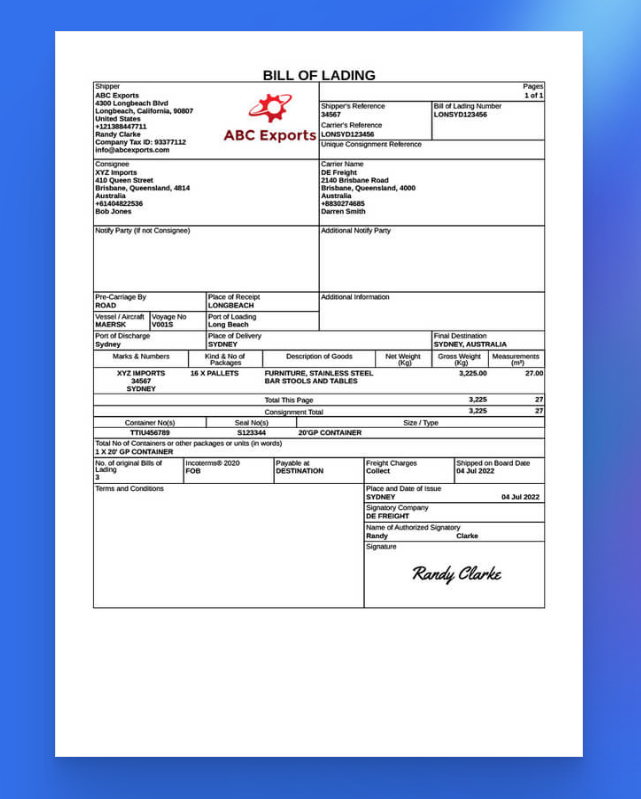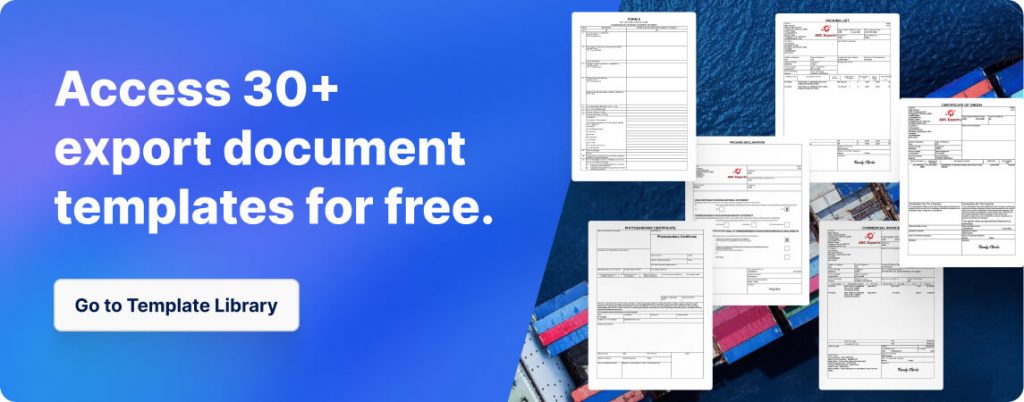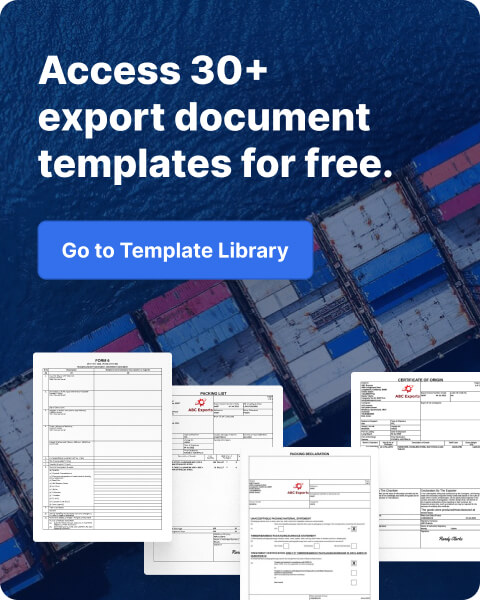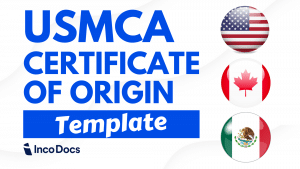What is a Bill of Lading in Import, Export and Shipping?
First, a Bill of Lading is a the most important shipping document involved in the import export process. However, some shippers may not understand the bill of lading meaning or the types of bill of lading that are issued along the supply chain. So, in this article we give insight into the bill of lading and the different types of bill of lading used in International trade.
A Bill of Lading (B/L or BoL) document is an extremely important document involved in the shipping and logistics industry. A Bill of Lading is a document that the Carrier of goods issues to the “Shipper” of the goods.
It’s a legal document to provide evidence or proof of shipment. This is extremely important in International Trade as it provides ‘title’ as to who legally owns the cargo. Moreover, the Bill of Lading acts as evidence of Contract of Carriage, receipt of goods and document of Title to the goods. Some Bills of Lading are negotiable, meaning they can be transferred to another party, making them a flexible tool for managing ownership and financial transactions in global trade.
The owner of the cargo (the holder of the original B/L) has the legal rights to claim the goods or arrange transfer ownership of the cargo to another party in the supply chain. This highlights how important the Bill of Lading in managing the relationship between the shipper and the carrier, ensuring the smooth execution of global trade operations.
How to use a Bill of Lading between the Parties involved in Global Trade
The Bill of Lading is important in International Trade when it comes to the Incoterms® that the goods are sold on and the payment terms agreed between buyer and seller. In alot of cases, buyers and sellers will agree to pay a deposit to the supplier then arrange the balance payment ‘upon receipt of Bill of Lading’.
This means that when the goods have been shipped and the shipper receives the B/L from the carrier (shipping line). The shipper will use this document as security and will only email a ‘copy’ of the Bill of Lading and other shipping documents to the buyer to prove that the goods have been shipped and to request the balance payment. The shipper will hold title to the original Bill of Lading (originals) and therefore legally retain ownership of the cargo. The shipper will use this as security to ensure that they receive the balance payment for the goods.
A B/L is also used when shippers and consignees arrange Letter’s of Credit (L/Cs) with both party’s banks. Letters of Credit are contracts written between the shipper’s bank and the consignee’s bank that will guarantee payment of goods ‘upon Bill of Lading’.

Once the buyer has made the balance payment the shipper will ‘surrender’ the B/L and tell the shipping company to issue an ‘Express Release’ or ‘Telex Release’ Bill of Lading.
This Express Release B/L will allow the title of goods to be transferred to the buyer without the buyer having to actually receive the original B/L documents in the mail. The buyer will use this Express Release B/L to arrange customs clearance and release of their cargo at the port of destination.
Types of Bill of Lading
There are many types of Bill of Lading documents and formats that carriers can issue along the supply chain. Below are a few examples of B/L types:
- House Bill of Lading
- Surrender Bill of Lading
- Straight Bill of Lading
- Master Bill of Lading
- Blank Bill of Lading
Each serving different purposes in the shipping process. The Straight Bill of Lading is non-negotiable, which means it specifies the delivery of goods to a named consignee and cannot be transferred to another party, contrasting with negotiable types that offer more flexibility in changing ownership.
The Bill of Lading is evolving. It’s called the Electronic Bill of Lading, or eB/L for short. This is a digital form of the traditional paper document that records the details of goods being transported. The eB/L does everything the paper version does but in a way that’s faster and more secure. With the eB/L, everyone involved in moving the goods can easily access and share the necessary information online. This cuts down on paper waste and speeds up the shipping process, making it easier to manage and track shipments.
Because global trade at its very nature involves multiple countries, each country must amend, approve and adopt new laws that enable the eBL to be used. Such laws are not easy to change and rely on the willingness of many structures of government to make such amendments.
The UNICITRAL (United Nations Commission of International Trade Law) is the legal body for the United Nations in relation to International trade law. In 2017 they created the MLETR (Model Law on Electronic Transferable Records) in order to enable the adoption of electronic transferable records. The adoption of new laws will create confidence and increase the adoption of the eBL over time.
What is the difference between Freight Collect and Freight Pre-Paid?
The B/L will state that the shipment has been sent on ‘Freight Collect’ or ‘Freight Pre-Paid’ terms. These terms relate to which party will be paying for the International Freight costs.
If the shipment is sent Freight Collect – the freight charges will be ‘collected’ by the Consignee. If the shipment has been sent on Freight Pre-Paid terms, the shipper will be billed for the freight charges.
It’s important to note that the carrier must receive payment of the shipping charges (by either party) BEFORE they will release the cargo to the Consignee.
-
Freight Collect Incoterms® include – EXW, FCA, FAS, FOB
-
Freight Pre-Paid Incoterms® include – CFR, CIF, CPT, CIP, DAP, DPU, DDP
What information is on a Bill of Lading format?
See below Bill of Lading example format.
- Shipper’s details including company name, address and contact details
- Consignee’s details including company name, address and contact details
- Notify Party (if different to the Consignee). In most cases the Notify Party will be the same as the Consignee, so the Notify party will be marked as ‘same as consignee’. This notify party can be used to notify any 3rd parties that need to be made aware of the shipment updates, progress and delivery.
- Carrier’s details, including company name, logo, address, contact details and their Terms and Conditions of carriage.
- B/L Number – the unique B/L number issued by the Shipping Company or Freight Forwarder that is arranging the carriage of the cargo.
- Vessel Name and Voyage number
- Place of Receipt, Port of Loading, Port of Discharge, Place of delivery, Final destination
- Container Number, Seal Number, Shipping Marks & Numbers, Description of goods, Gross Weight, Cubic Measurement (m3), Special Instructions
- Freight Prepaid or Freight Collect
- Place and Date of Issue, Signature
- Terms and Conditions of Carriage (usually on next pages)










